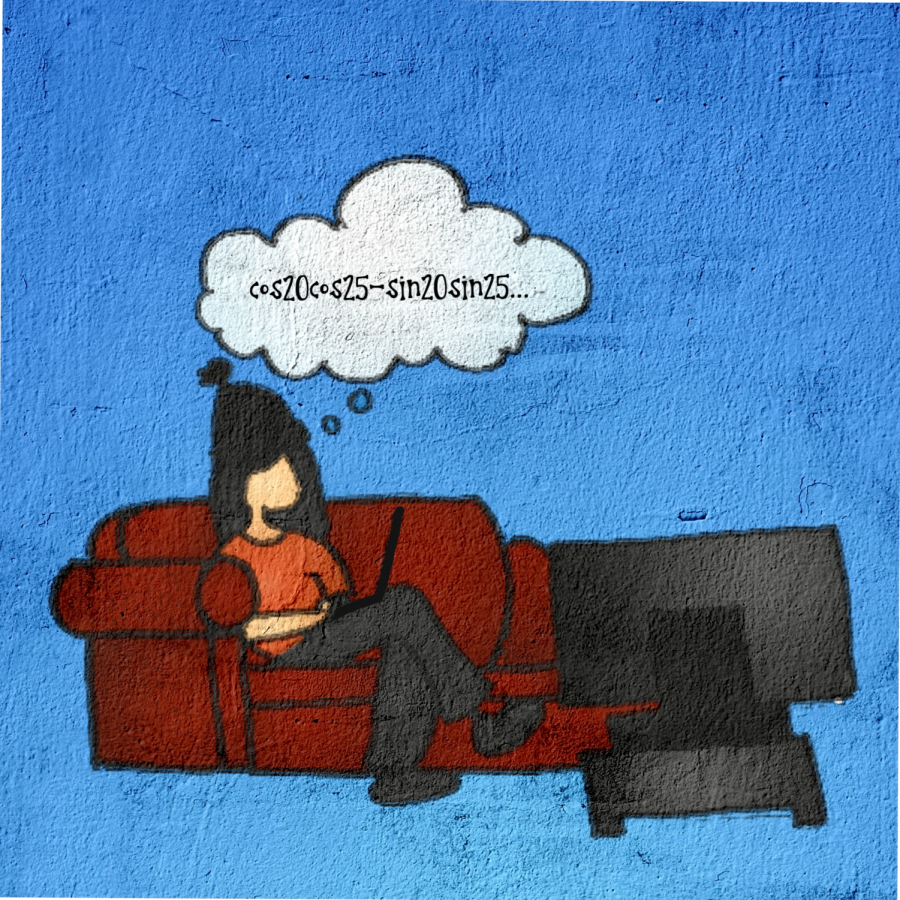On and off: perspectives about cameras on Zoom
Illustration by Lila Portis
December 14, 2020
Your environment always impacts how you learn. Who knew we would become nostalgic for the columns of laminated posters peeling off walls, and the rows of beige or steely grey desks, with their wads of gum and scrawled graffiti. Today‘s virtual “classrooms” are rows upon rows of boxes, some showing us the faces of our peers, while others are mysteriously blank. With almost a year of e-learning under our belts we should consider how this new environment has changed our classroom community.
One key change between regular school, and this virtual learning is the faces of people we interact with. On zoom its possible to turn your camera off and not be seen all throughout the school day. Could we replicate school more successfully if students were required to keep their cameras on? Teachers and administrators have already made decisions and policy about this, but within the student community there are also a wide range of both opinion and reaction.
“I keep my camera off because I don’t feel comfortable. When I feel like I have all those eyes on me, [it] makes it more difficult for me to learn,” sophomore Amira Grace says. “Of course, I’m not the center of the world, and I don’t think everyone’s watching my every move; it always feels weird that if I do something wrong, it’s being recorded. Teachers record the classroom sometimes [and] there’s just people watching you. ”
For Grace and others, having their camera on is like giving people a window into their life. Before the pandemic, school was a place that was solely focused on academics. Now, being in class with someone is all too similar to inviting them into your home, and for many, this can lead to a certain amount of fear.
“It’s a little bit uncomfortable to have everyone be able to see into your bedroom, that’s just a little weird. Also, if someone else is in the room, I can see why they might not want to be [on] camera,” sophomore Natalie Svolos says.
But the option to turn your camera off can remove much of this discomfort. Especially for students who feel like they are judged based on their circumstances, Zoom can actually be beneficial, because it provides the option to prevent people from seeing you.
“Certain indicators can show whether someone has a higher or lower socio-economic status just from the background of their house.” Grace says. “[But on Zoom], we have the option to be able to turn that off and be judged by our intellect and our voices instead of what [people] see around us and what they see on the camera.” Grace says.
Despite the benefits to opting into camera use, creating a learning environment has challenged classrooms as screens remain faceless. One of the biggest problems is the difficulty it causes in determining if someone is present in class. If someone has their camera off and doesn’t speak during class, it’s virtually impossible to know if they are actually there. Even if they answer a question, or put their name in the chat for attendance, they can very easily walk away from the screen.
According to junior Evan Petrolle, having an option to keep cameras off has made it more challenging both for students to learn and for teachers to engage students. He shares that in multiple classes where the majority of students have their cameras off he has seen minimal participation in either answering questions posed by the teachers or connecting with classmates.
Petrolle says that this is even true when having discussions about important topics.
“Whole class discussions never seem to happen. In my experience, it usually is just one, two, or sometimes three people and the teacher talking, which is terrible, especially considering discussions about the topics like [race, gender, and politics] are really serious and need to be talked about as often as possible when the setting is right,” Petrolle says.
However some students say that this lack of engagement is the same as what we would see in a normal school year.
“Even if you do have your camera on, if you don’t want to pay attention then you won’t.” Grace says. “I’ve seen many students have their camera on but be on their phone. Someone who doesn’t really like school or doesn’t really like their classes is going to be distracted either way.”
But while experiences on this differ, not being able to see students can still be hard for teachers. Body language is important when making sure students are understanding the material, and without being able to see people nodding their heads or looking befuddled, it can be hard to know how much help they need.
“Someone who is understanding everything in math, and someone that’s confused looks very different. But when someone is confused, they usually turn their camera off, because they [think] ‘I’m not going to be able to figure it out,’” sophomore Sammi Lewis says.
The result of the two sides of this issue is a kind of dilemma. How can we make students comfortable, and stop the judgement of their environment, while still making sure that we can keep students engaged, and not let anyone slip through the cracks?
“We can try to not judge,” Grace says. “Although I don’t think we can change what opinions we formed implicitly, I think we can act on not trying to enforce those opinions that we do have.”



















